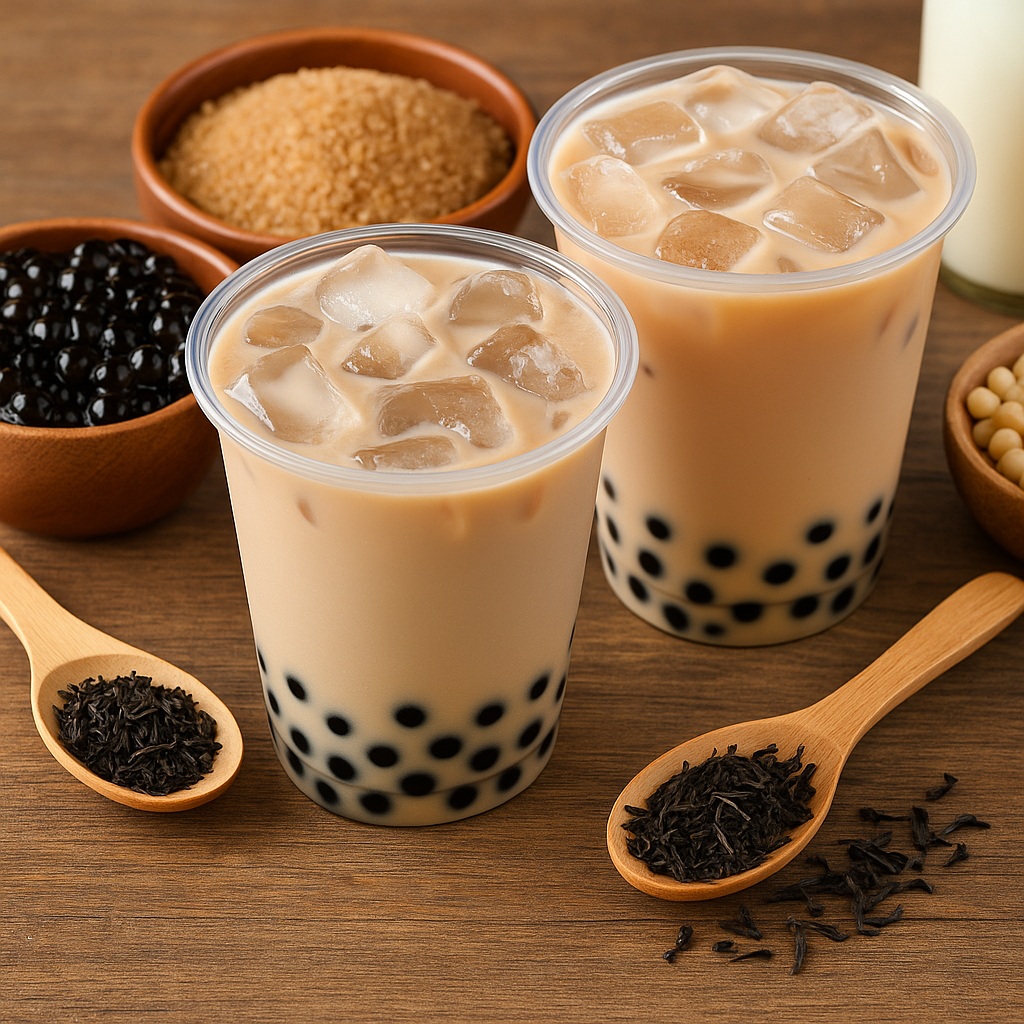Is Bubble Tea Still Profitable in 2025? European Market Outlook and Investment Trends

From Global Craze to Strategic Growth
A decade ago, bubble tea was a niche Taiwanese drink that gained attention mainly for its chewy pearls and colorful presentation. By 2025, it has evolved into a global lifestyle beverage — from boutique cafés in Paris to grab-and-go counters in London and Berlin.
Yet as the market matures, one critical question arises: Is bubble tea still a profitable business, especially in Europe where costs are high and competition is increasing?
The short answer: yes, but not in the same way as before. Profitability now depends less on hype and more on efficiency, differentiation, and sustainability.
1. Europe's Market Landscape: Maturity Meets Opportunity
Europe's bubble tea market continues to expand, though at a slower pace than the explosive years of 2020–2023. According to recent market analyses, growth now centers on regional diversification and brand localization rather than store count.
Western Europe — particularly the UK, France, and Germany — has seen bubble tea become part of urban culture. Meanwhile, Central and Eastern Europe are emerging as the new frontiers, where operational costs remain lower and consumer curiosity is still strong.
Interestingly, European consumers are shifting from novelty-driven purchases to quality-driven preferences. They care about ingredients, sugar levels, and sustainable packaging — creating opportunities for manufacturers who can offer clean-label, premium, and eco-friendly formulations.
2. Profit Margins Under Pressure: What Really Determines Success
In 2025, the biggest challenge is not demand — it's margin compression. Rising ingredient and logistics costs, combined with stricter EU sustainability standards, have reduced the average profit per cup.
A typical breakdown looks like this:
-
Ingredients (tea, milk, tapioca, flavorings): 35–40% of total cost
-
Labor: 20–25%
-
Rent and utilities: 15–20%
-
Packaging and sustainability compliance: 10–15%
This leaves only about 10–15% net profit, forcing operators to think strategically.
Those who survive and thrive are the ones who optimize their supply chains, embrace automation, and shift toward high-margin SKUs such as milk foam teas, seasonal flavors, or limited-edition collaborations.
3. Innovation as a Profit Multiplier
Technological and product innovation are redefining what “bubble tea” means in 2025.
-
Powder-based milk teas with improved solubility and taste consistency are helping cafés reduce waste and maintain stable quality.
-
Plant-based options like oat and soy milk are now mainstream, driven by Europe’s strong vegan and lactose-free movements.
-
Automated tea dispensers and smart brewing systems reduce labor costs, particularly in markets where wage inflation is high.
These innovations not only improve efficiency but also enable brand differentiation — crucial in a market where visual aesthetics and taste innovation often outweigh brand loyalty.
4. Supply Chain Resilience: The Hidden Engine of Profit
For Europe, supply reliability has become a defining profitability factor.
The COVID-19 era exposed the risks of over-reliance on long-distance shipping from Asia. Since then, local warehousing and regional partnerships have become the new standard.
Leading ingredient suppliers are now offering:
-
Stable stock availability through EU-based distribution hubs
-
Custom OEM formulations tailored to European taste profiles
-
Reduced lead times and logistics costs
This regionalization allows brands to scale faster and react to seasonal demand — whether that's a “matcha latte boom” in Paris or a “fruit tea trend” in Warsaw.
5. Consumer Behavior: Experience Over Quantity
Unlike early-stage markets, Europe's bubble tea audience now seeks emotional and experiential value.
Young consumers view bubble tea shops as lifestyle spaces — somewhere between cafés and design studios.
This evolution means profitability depends less on selling volume and more on building memorable, differentiated experiences:
-
Limited seasonal menus inspired by European desserts
-
Artisanal toppings like fruit jellies, cheese foam, or herbal pearls
-
Storytelling that connects Asian craftsmanship with European creativity
When done right, this approach creates brand resilience that survives beyond short-term trends.
6. Sustainability: The New Competitive Advantage
In 2025, sustainability is no longer optional — it's a profit strategy.
The EU’s Single-Use Plastics Directive and consumer awareness have accelerated the adoption of biodegradable straws, paper cups, and recyclable lids.
While this adds initial cost, brands that invest early often gain long-term loyalty and regulatory readiness.
Suppliers that can provide eco-friendly materials without compromising quality become preferred partners for European chains and independent cafés alike.
Sustainability also extends to sourcing — transparent supply chains, traceable tapioca origins, and ethically sourced tea leaves are increasingly part of a café's brand story.
7. Investment Outlook: What Lies Ahead for 2025–2030
Europe’s bubble tea sector remains an attractive niche within the beverage industry, but investors are now looking for smarter growth, not just more outlets.
Emerging opportunities include:
-
Private label partnerships with OEM manufacturers to create local-flavored lines.
-
Functional beverages combining bubble tea textures with vitamins or collagen.
-
Hybrid cafés blending coffee culture and tea innovation.
Over the next five years, the market is expected to see moderate but stable growth, with profitability shifting toward players who combine:
-
Supply chain control
-
Innovative product development
-
Brand localization strategies
Simply put, the winners will be those who treat bubble tea not as a drink, but as a category to evolve.
Profit Lies in Adaptation, Not Imitation
Bubble tea remains profitable in 2025 — but not for everyone.
The European market rewards those who understand local culture, sustainable operations, and long-term partnerships. The age of copy-paste franchise expansion is over; the future belongs to those who innovate responsibly and think globally.
In this new chapter, profitability isn’t just about selling drinks — it's about building resilient systems, authentic experiences, and cross-cultural connections that keep the spirit of bubble tea evolving for years to come.

